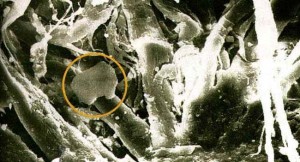You’ve got cocaine on you!
YOU MUST BE A DRUG DEALER BECAUSE YOUR MONEY SHOWS COCAINE!
This fun introduction is a means of relating to you the issues of the Locard Exchange Principle (https://www.thetruthaboutforensicscience.com/the-locard-exchange-principle-in-forensic-science-the-real-itouch/) as applied to cocaine and currency. It is the consensus of these works that upwards of 90-97% of paper currency in the world (including the stuff that is in your pocket right now) will test positive for the presence of cocaine. Similar findings are true with respect to other drugs of abuse too.
There are several peer-reviewed articles that highlight this phenomenon.
- Negrusz A, Perry JL, Moore CM. “Detection of Cocaine on Various Denominations of United States Currency” J Forensic Sci 1998;43(3)626–629.
- Y. Zao, K. Zhang, J. Wu , C. Rego , J. Fritz, An accurate and nondestructive GC method for determination of cocaine on US paper currency,J.Sep.Sci.31(2008)2444–2450.
- F.A. Estee-Turillas, S. Armenta, J. Moros , S. Garrigues, A. Pastor, M. Dela Guardia, Validated, non-destructive and environmentally friendly determination of cocaine in eurobanknotes, J. Chromatogr. A1065 (2005) 321–325.
- M. Lafitte, F. Brousse, L. Noel, Y. Gaillard, G. Pepin, Drugs of abuse on banknotes: comparison between notes from the general circulation and those from drug trafficking, Ann. Toxicol. Anal. 14 (2002) 95–99.
- A. J. Jenkins, Drug contamination of US paper currency, Forensic Sci. Int.121 (2001) 189–193.
- J. F. Carter, R. Sleeman, J. Parry, The distribution of controlled drugs on banknotes via counting machines, Forensic Sci. Int. 132 (2003) 106–112.
- S. J. Dixon, R. G. Brereton, J. F. Carter, R. Sleeman, Determination of cocaine contamination on bank notes using tandem mass spectrometry and pattern recognition, Anal. Chem. Acta 559 (2006) 54–63.
- S. Armenta, M. Dela Guardia, Analytical methods to determine cocaine contamination of bank notes from around the world, Trends Anal. Chem. 27 (2008) 344–351.
- R. Sleeman, J. F. Carter, K. A. Ebejer , Comments on ‘‘Validated,non-destructive and environmentally friendly determination of cocaine in euro banknotes’’, J.Chromatogr. A1108 (2006) 285–1285.
- K. Wimmer, S. Schneider, Screening for illicit drugs on Euro banknotes by LC–MS/MS, Forensic Sci. Int. (2010), doi:10.1016/j.forsciint.2010.07.037
As a general observation, as limits of detection continue to lower as instrumentation becomes more sensitive, the less meaningful the data becomes.

This has lead us to this point with this assay which is that the conclusion that “there is cocaine on the currency” which is often used in forfeiture cases as a means to try to establish a nexus to illegal activity to justify the “policing for profit” model of highway drug interdiction enforcement to be an absolutely meaningless metric.
This is the type of situation that falls under the idea of just because you have data doesn’t mean you know how to use it correctly or responsibly. It’s not the instrument’s fault for arriving at the data, but it is the false interpretation of that data which can and does lead to erroneous occlusions just like the first two sentences of this post.


